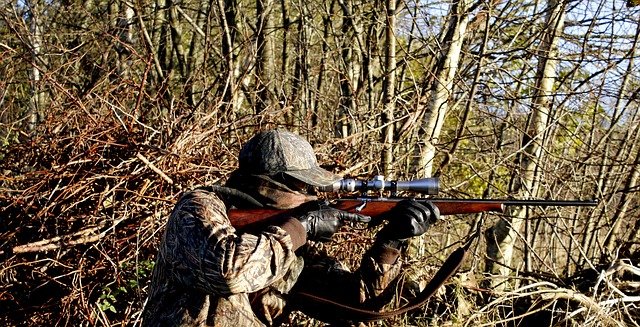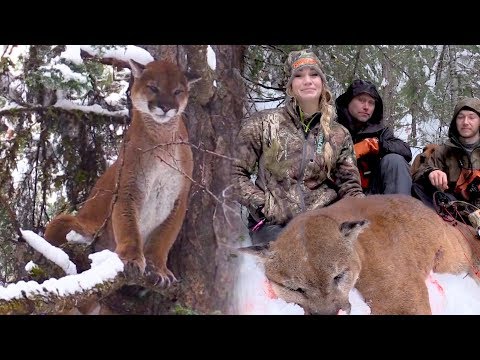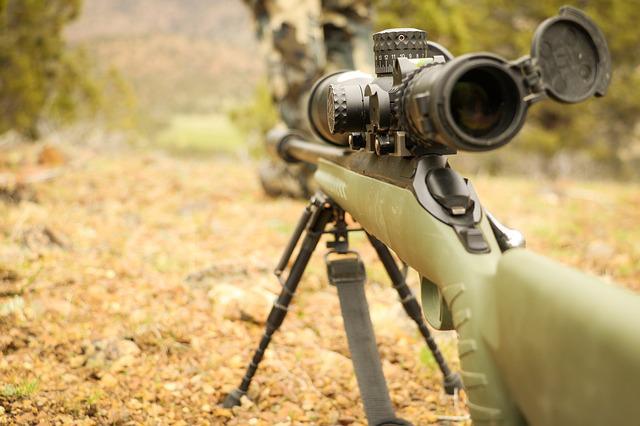
When it comes to Minnesota DNR hunting regulations, there are a variety of specific requirements that you should know. Here, you'll learn about Bag limits, requirements for three points on one antler, and party requirements. This article will also cover crossbow hunters. So what are these requirements for crossbow hunters? How can you determine what they are? And, how can you comply with them? Continue reading to learn more.
Bag limits
2015 saw a change in the Minnesota deer bag limits. They are now "bucks" only, and not "bucks with antlerless lottery". The antlerless limit used to be unlimited. The change was made to increase harvest, control disease spread and address urban deer issues. However, there was some debate among hunters about the change. Five deer are now allowed per season. This is a reduction from the previous limit for unlimited antlerless bags of ten.

Three points or more on at least one of the antlers are required for a buck.
Hunting in 12 counties of the northwest Lower Peninsula requires that bucks have at least three points on each antler. Each point must not exceed one inch in length. The Natural Resources Commission applied the rules in June. The antler point restrictions in Leelanau County have been in effect for the past 10 year. Three points minimum are required in Leelanau for a buck that is legal for a muzzleloader mobility impairment hunt.
Requirements of crossbow hunters
Crossbow hunting is legal in Minnesota, though it is not allowed during firearm, muzzleloader or archery seasons. There are however some restrictions that must be met to legally use this weapon. Crossbows are prohibited in state-owned, managed wildlife management areas and the Red Oak Unit during archery only bear season. By special permission, crossbows can be used for hunting deer in state-owned or managed wild life management areas. However, anyone under 15 years old can use crossbows as long they have a firearms permit.
Requirements
Minnesota's hunting regulations are important to understand if you plan on hunting there. The DNR allows hunting on protected species without a permit. Non-residents cannot hunt or trap on the land they own. Minnesota offers a small game hunting license. Under Minnesota hunting regulations, "taking" an animal means pursuing, shooting, or assisting another person in taking it. Possession is the possession of a game animal. It is also included under the definition of taking an animals.

Bears can be tagged on the spot or taken into the custody of the hunter
Before transporting bears, bear hunters must register them. Bear hunters must register bears by phone or in-person within 48 hours of harvest. Bears must have been skinned, trimmed, and then further divided. All edible meat must be provided at time of registration. Bear tooth samples must be submitted by hunters to monitor bear populations.
FAQ
What kinds of guns are allowed to be used?
Hunting can be done with a variety of different weapons.
Hunters typically use rifles, shotguns, handguns, and muzzle-loading firearms.
Rifles are designed to fire bullets from long distances. Shotguns are usually loaded with pellets. Handguns are made to fire bullets through your hand. Muzzle-loading firearms work in the same manner as modern-day pistols.
Crossbows are used to shoot arrows. Bowhunters are also known for their archery weapons.
You need to be skilled in hunting with a crossbow. First, learn how you can aim and shoot the weapon.
How much does it cost for a hunter to become?
Hunting can be expensive depending on where you live.
You may not need to pay much to gain access to public lands in some areas.
Some states require permits and licenses before you can hunt.
The price of hunting varies based on the type of firearm you use. A rifle will usually cost more than a gun.
A license can cost anywhere from $10 to $50. You might need to buy additional tags depending upon how many hunt days you want.
To hunt certain species, you will need a permit. The species you hunt will dictate the amount you pay.
If you want to hunt wild turkeys, you will need to pay up to $150 per tag.
What are the advantages of hunting?
Hunting is an ancient tradition practiced by many cultures around the world. It was used for food and shelter as well as tools and medicine. Even though people hunt for sport today, they also do so for food and recreation. Hunted meat is usually eaten right after it has been killed. Skin, fur, feathers and bones of hunted animals are often sold as trophies.
Hunting isn’t just about eating, it’s a way that you can live.
People who hunt have strong family ties and friendships because they spend time together. They share stories and experiences at campfires, and over meals.
Hunting is a way for hunters to enjoy the natural world and wildlife. This helps them to appreciate all that life has to offer.
When they take care of wild animals, they learn respect and responsibility.
Because they practice conservation, hunters become better citizens. They work to protect habitats, species, and the environment. They understand how much land and water we need to survive.
Hunters are part a larger community. Their families depend on them. They support each other. They support local businesses.
Hunters can also give back. Many donate money to organizations that help children, elderly people, veterans, and other groups.
Hunters have the option to volunteer their time to help others in need. For example, they could work with the Humane Society of the Red Cross.
What type of training does it take to become an experienced hunter? How long does it take?
An introduction course is necessary to learn how hunting works. This course teaches about different game species and provides information about hunting laws.
You will learn how you can safely use ammunition and firearms. These instructions will help you safely use them.
This course can be completed in two weeks or three months. Some courses can also be done online. Other courses are available in person.
To qualify for a license, you must pass a written test. You might also need proof that you have completed a hunter's education course.
How much does it cost to get licensed? What if I don’t make enough money?
The cost of getting licensed varies depending on the state you live in. It ranges from $20 to over $100.
You may be eligible to receive a grant or loan if your income is not sufficient.
You will also need to pay a tag. The price of tags varies depending on the game you are hunting.
Tags are available for deer, elk, bear, moose, waterfowl, upland birds, and furbearers (such as foxes).
Some states require registration with the Department of Natural Resources to be eligible for a license.
Check the regulations in your area before you hunt.
What is the most important thing about hunting animals?
How do we get there The first step is to learn how to shoot accurately. We must then learn to hit our target. And finally, we must learn how to make adjustments when we miss.
The most important part of hunting is knowing what you're doing. You will never be able to improve if your knowledge is not up-to-date. You might think you've improved because you've gotten better shots, but if you didn't know what you were doing before, those shots won't mean anything. It's the same with hitting targets. If you don't understand why you're missing, you'll never improve. You need to understand what you want.
Knowledge is key. Your ability to hunt depends on your understanding of the animal you're trying to kill. While out in the natural world, it is important that you learn everything you can about any animal you encounter. You want to know their habits, their behaviors, and even their personalities. So you can plan your hunts smoothly and efficiently.
It is important to always learn from other people who have achieved success in the past. There are many books that can be found on this subject. In addition, there are websites like www.thehuntingzone.com that offer great tips and advice. There are also people with years of experience. They will be able to help you understand what works and not.
Once you've learned everything you can, it's time to practice. Practice makes perfect. You shouldn't practice until your confidence is high. Instead, practice until confidence is built. Confidence allows one to relax and enjoy each step. Relaxation can help you focus on the task in hand. Concentration is key to maximizing every opportunity. Opportunities only come when you are relaxed and focused.
It's time for you to test your new skills. If you fail, don't be discouraged. You can keep improving and practicing. Eventually, you'll find success.
How popular is hunting in America?
Hunting is a favorite American pastime. Hunting equipment and supplies are worth more than $8 billion annually in the United States. An average hunter spends approximately $1,000 annually.
Many people hunt for relaxation and a hobby, but hunting is also a popular sport. The United States is home to nearly 50 million hunters. This number includes both men and women.
Hunters are from all walks of the life. These hunters can range in age from children to seniors. Some hunters have been doing it for years while others just started recently.
People choose hunting because they like spending time outdoors. Hunting is an excellent way to get in touch with nature and feel the freedom of being free.
Hunting can also be very social. Hunters often go hunting together as a group. These groups could include friends, family, or co-workers.
Hunting has become a popular sport for hunters. Hunting has become a competitive sport. Hunters compete against each other to see which species they can hunt.
There are also competitions between states where hunters try to beat the previous record for the biggest deer kill. These records are usually set by professional hunters.
Which gun is best for hunting
A.22 caliber firearm is the best weapon to hunt with. It's light and easy for hunters to carry. It allows you to accurately shoot long distances.
When you don't expect a predator to attack, this is the best time to use your firearm.
You don't want your ammunition to go to waste by hitting a tree. You need to have a clear shot at your prey.
You can hunt larger game with a rifle in the.30 caliber range. It is heavier than a.22 calibre rifle.
For accuracy with a 30-caliber rifle, you will need more practice.
Statistics
- According to the Wildlife Restoration Act, passed in 1937, most of the state conservation efforts are funded through hunting and fishing license sales and firearms sales. (stacker.com)
- - Percent of residents with paid hunting licenses: 0.7%- (stacker.com)
- Licenses dropped from a peak of roughly 17 million in the 1980s to 15 million in 2019, according to The Seattle Times. (stacker.com)
- Thanks to the 1937 Pittman-Robertson Act, an 11% excise tax was placed on the sale of firearms, which were then used for conservation. (stacker.com)
External Links
How To
How to hunt wild hogs
Wild hogs, which are large, can be found in North America and Asia as well as Europe. Wild hogs feed on vegetation and small animals such a rabbits or mice, birds, insects, and fish. They usually eat at night. The gestation period is approximately six months. One piglet then emerges. A sow gives birth every two years. Wild hogs live alone, but sometimes they are part of a group called herds.
Wild boars are 200 pounds (90 kilograms) in weight. Their head length is between 10 and 12 inches (25-30cm), while their body length is between 20 and 30 inches (50-60cm). Wild pigs have short tails, long legs and broad shoulders. They have a thick layer under their skin of fat.
They have a very strong sense of smell, hearing, and sight. These senses help them detect danger and find food. They can run upto 35 mph (56 km/h) at speeds of up to 14 mph and jump upto 15 feet (4 m) from a distance of just under 4 m. They have sharp teeth. They can be aggressive in defending themselves from predators.
Hunting wild Hogs can be difficult as they are agile, intelligent, and elusive. Hunters must stalk them carefully. Hunting too soon can cause the animal to escape. Hunting too early can cause the animal to escape.
Wild hogs can be killed using many hunting methods. The most common method is shooting. This requires hunters to track down the animal and then wait until it comes into range. Another method is trapping. Setting traps near water sources is another method of trapping. A trap may contain a scent lure such as peanut butter and corn meal. When the trap is opened, the hunter shoots a trapped pig.
Snaring, another method, is also an option. The pig is caught using snaring, which uses a noose out of rope. It is most effective if the pigs are caught in its mating period.
Other options include poisoning or spearing. Netting and spearing involve placing a net or spear through the pig's neck to stop its breathing. Poisoning refers to injecting poison in the pig's neck.
Hunters who wish to hunt wild hogs need to be prepared for the cold weather. For warmth, hunters may need to wear snowshoes in certain areas. Some hunters bring dogs with them to help them track the animals.